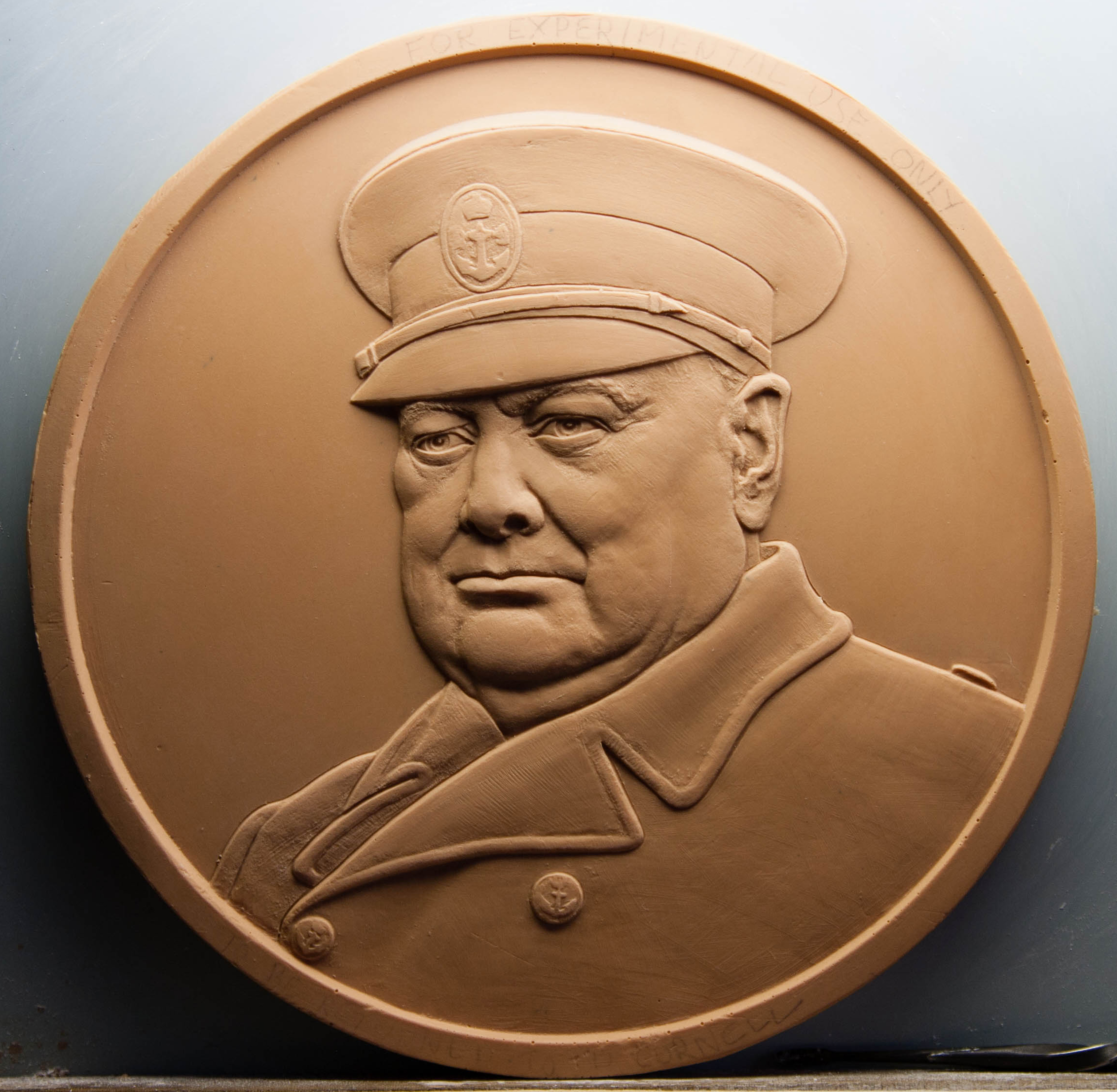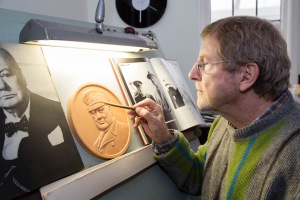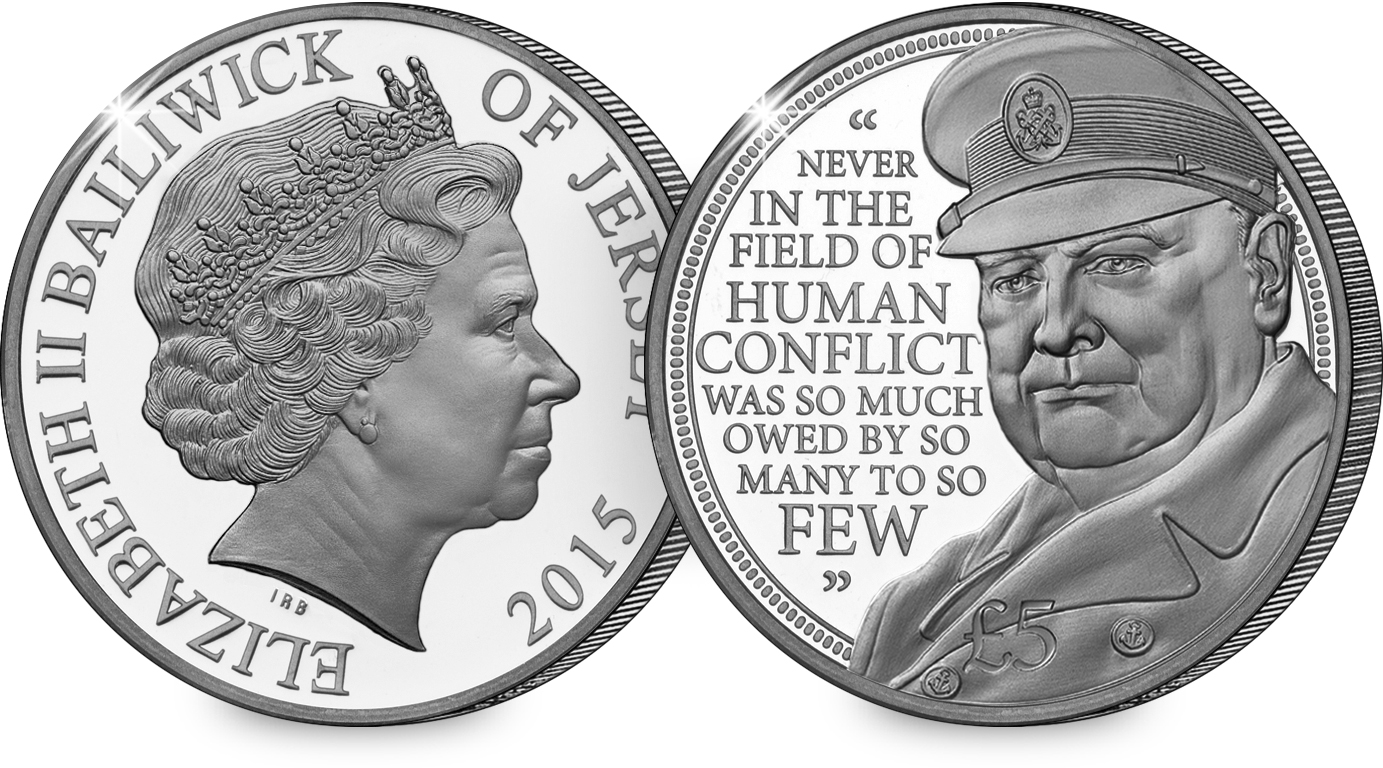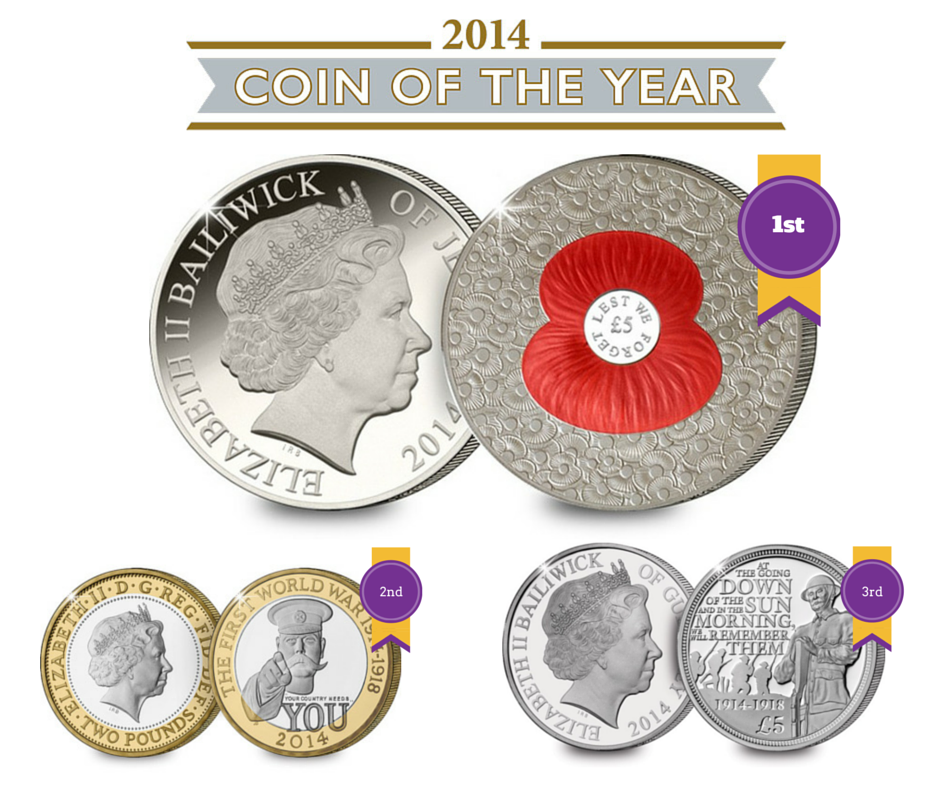Posts Tagged ‘Coin Collecting’
The story behind the Winston Churchill £5 Coin
This year a brand new £5 coin has been issued to commemorate Sir Winston Churchill, and it features a never-seen-before effigy of the great man.
Designed by renowned sculptor and artist David Cornell FRSA, the new portrait shows a defiant Churchill in military uniform.
I’ve been given a behind the scenes look at the creation of the portrait, and had a quick chat with the artist himself.
David Cornell is perhaps more famous for sculpting members of the Royal family, (he was even commissioned to paint a birthday portrait of the Queen) so I thought I’d ask him about his inspiration behind the new design:
“Winston Churchill was a major part of my childhood growing up in London during the War, hearing his speeches and seeing photos on posters, which left an indelible impression on me.
“I realised later what a great man he was and his contribution to the War effort, inspiring the people of Great Britain.
“As a portrait artist, it has been a great honour for me to be able to portray him in this tribute to honour his legacy.”
First of all Cornell worked on a plaster engraving of the portrait, making sure it fits the very particular dimensions of a coin. You can see the fine detail in the picture above, and also the large size of the plaster, which has to be reduced when the die is created to strike the coin.
The finished £5 coin also features an inscription of one of Churchill’s famous speeches: ‘Never in the field of human conflict was so much owed by so many to so few.’ Although spoken in reference to the heroes of the Battle of Britain, the quotation was chosen as it represents Churchill’s indomitable spirit during the war.
The coin has been issued on behalf of the Bailiwick of Jersey, and is available now in a range of metals – from an impressive 5oz 22 carat gold version measuring 2 1/2 inches in diameter, to a highly collectable cupro-nickel version available to all. I’m sure you’ll agree, it will make a fitting tribute in any collection to our greatest ever Prime Minister.
If you are interested…
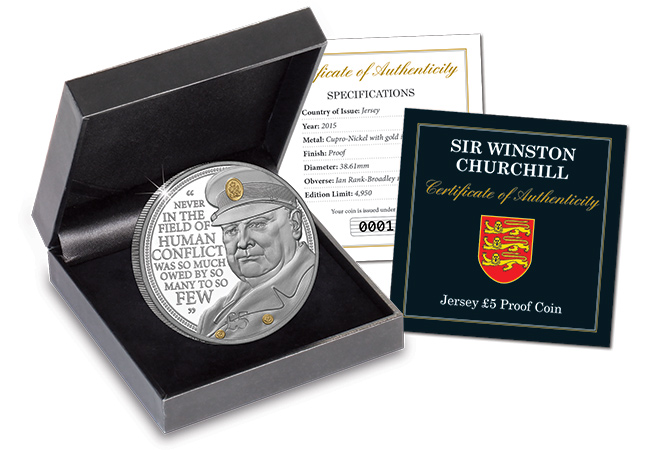
The new Winston Churchill £5 Coin is available now in a special limited edition Proof version. Complete with Presentation Case and Certificate of Authenticity.
As we bid farewell to a familiar face…
The Royal Mint have announced that on 2nd March, the effigy of Her Majesty the Queen on UK coinage will be replaced with a brand new fifth portrait. While we wait for the new portrait to be revealed, here’s a little more detail about the history of the current portrait that has featured on our coinage for the past 17 years…
In 1997 the Royal Mint held a competition to design the obverse of the Golden Wedding Crown. The standard of entries for the joint portrait of Queen Elizabeth II and Prince Philip was so high that it was decided it was time to explore the possibility of replacing the existing portrait by Raphael Maklouf. The winning portrait was designed by Ian Rank-Broadley FRBS and introduced in 1998.
Designed to fill the full circle of the coin, its larger size was a deli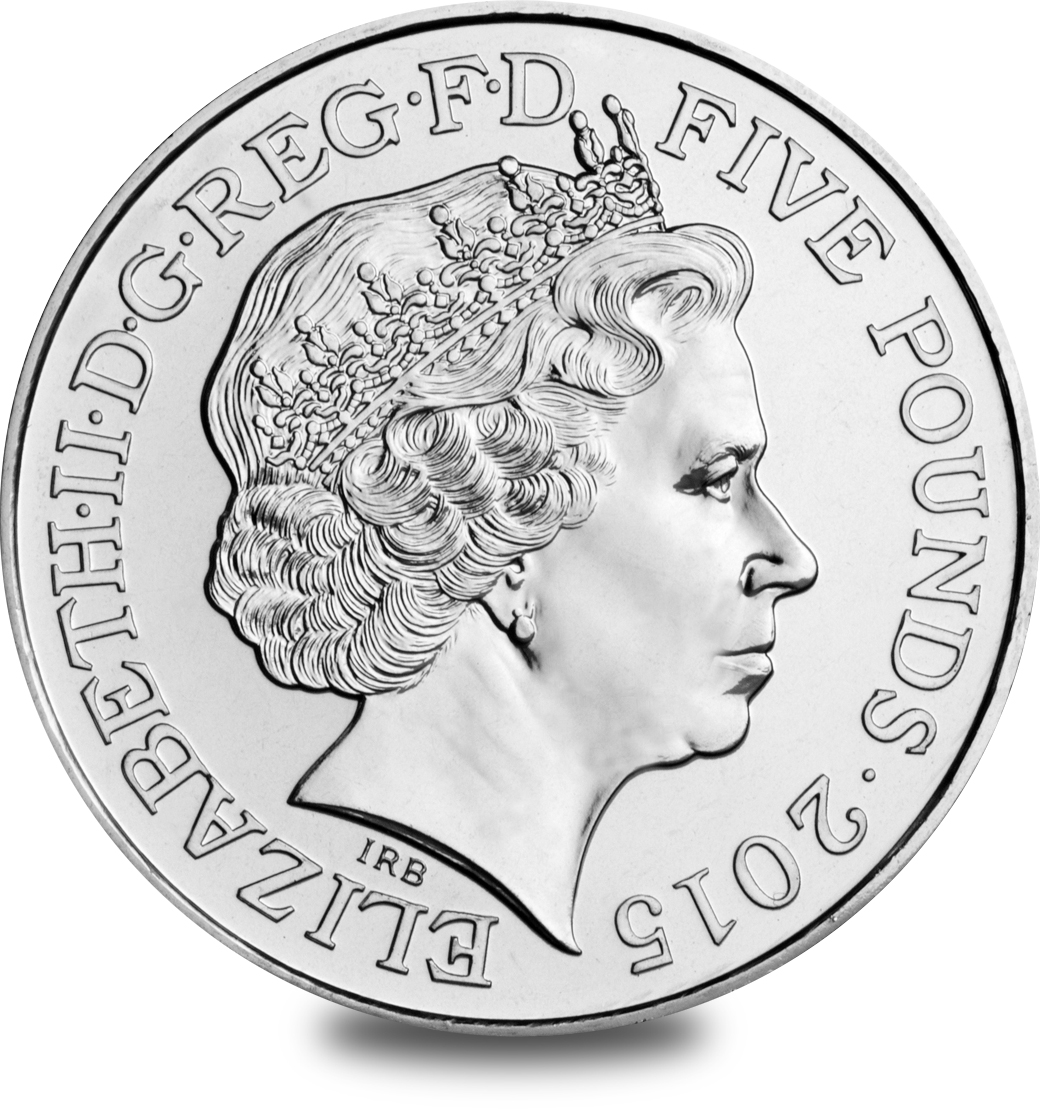 berate response to the smaller coins that had been introduced into circulation. Compared to its predecessor, the portrait is noticeably more mature. Ian Rank-Broadley FRBS felt that there was ‘no need to disguise the matureness of the Queen’s years. There is no need to flatter her. She is a 70-year-old woman with poise and bearing’.
berate response to the smaller coins that had been introduced into circulation. Compared to its predecessor, the portrait is noticeably more mature. Ian Rank-Broadley FRBS felt that there was ‘no need to disguise the matureness of the Queen’s years. There is no need to flatter her. She is a 70-year-old woman with poise and bearing’.
Since then he has designed the 2000 Queen Mother Centennial Crown, 2002 Golden Jubilee Crown, and the conjoined portrait of Queen Elizabeth II and Prince Philip on the 2007 Crown. His effigy of Her Majesty has been used on all circulating British coins since 1998.
Secure the last set of UK coins to feature the current portrait of the Queen
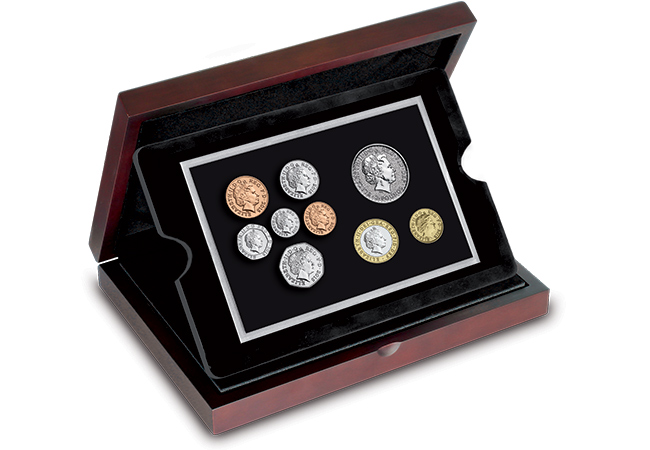 Struck by the Royal Mint to a superior Brilliant Uncirculated finish, the set features the eight 2015 UK definitive coins from the 1p to the £2, brought together with the flagship 2015 1oz pure Silver Britannia coin. Just 495 complete Queen’s Fourth Portrait Specimen Sets have been released.
Struck by the Royal Mint to a superior Brilliant Uncirculated finish, the set features the eight 2015 UK definitive coins from the 1p to the £2, brought together with the flagship 2015 1oz pure Silver Britannia coin. Just 495 complete Queen’s Fourth Portrait Specimen Sets have been released.
Presented in a luxury wooden Presentation Case and complete with its Certificate of Authenticity, this really is the ultimate way to bid farewell to a familiar face.
NOW SOLD OUT
Coin of the Year – the results!
The results are in and I can now reveal your top 3 coin designs of the year!
3rd place – The Guernsey 2014 First World War Centenary £5 Coin
2nd Place – The UK 2014 Lord Kitchener £2 Coin
And the winner….
1st Place – The Jersey 2014 ‘100 Poppies’ £5 Coin
Thanks for all your votes! The striking design and the importance of the work of the Royal British Legion combined to make the ‘100 Poppies’ coin a real stand out this year.
Now it’s time to look forward to the new issues for 2015!
If you’re interested…
We still have some stock available of the UK 2014 Lord Kitchener £2 Coin. Click here

